Imidacloprid and Diuron Application Trial
This trial assessed the pesticide residual run-off from two pesticides (Imidacloprid and Diuron) following pesticide treatment using different application styles.
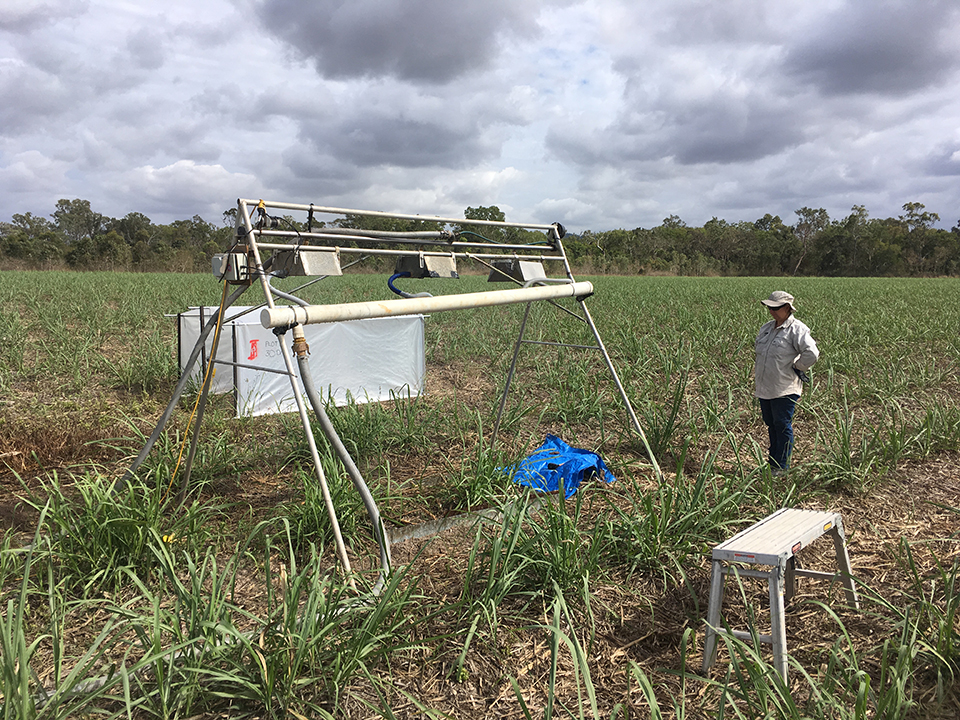
Project Background
This project involved collaboration between key partners in Reef Catchments, Catchment Solutions, The Department of Agriculture and Fisheries and a collaborative cane farmer to investigate the environmental benefits and risks associated with applying Imidacloprid in soils using a closing wheel applicator in comparison to a traditional open wheel applicator to control cane beetles.
The project also examines the pesticide residue run-off differences between the broadacre and banded application of Diuron using on the same trial Imidacloprid plots. The run-off loads of the nutrients, sediments and other applied pesticides were also assessed from these same plots.
Imidacloprid is a systemic insecticide which acts as an insect neurotoxin and belongs to a class of chemicals called the neonicotinoids. These neonicotinoids act on the central nervous system of insects and work by interfering with the transmission of stimuli in the system. Specifically, it causes a blockage of the nicotinergic neuronal pathway. By blocking nicotinic acetylcholine receptors, Imidacloprid prevents acetylcholine from transmitting impulses between nerves, resulting in the insect’s paralysis
and eventual death (Gervais, J.A.; et al. 2010).
Imidacloprid is an insecticide used in the cane growing industry to control cane beetles. It can be applied using several means including soil injection, application to the skin of the plant, broadcast foliar, ground application as a granular or liquid formulation, or as a pesticide-coated seed treatment. Imidacloprid is widely used for insect pest control in agriculture as well as in the veterinary industry for flea and tick control. It has been suggested that the use of Imidacloprid may be contributing to honey bee colony collapse disorder, the decline of honey bee colonies in Europe and North America observed since 2006. As a result, several countries in Europe have restricted use of Imidacloprid and other neonicotinoids (Gibbs 2016).
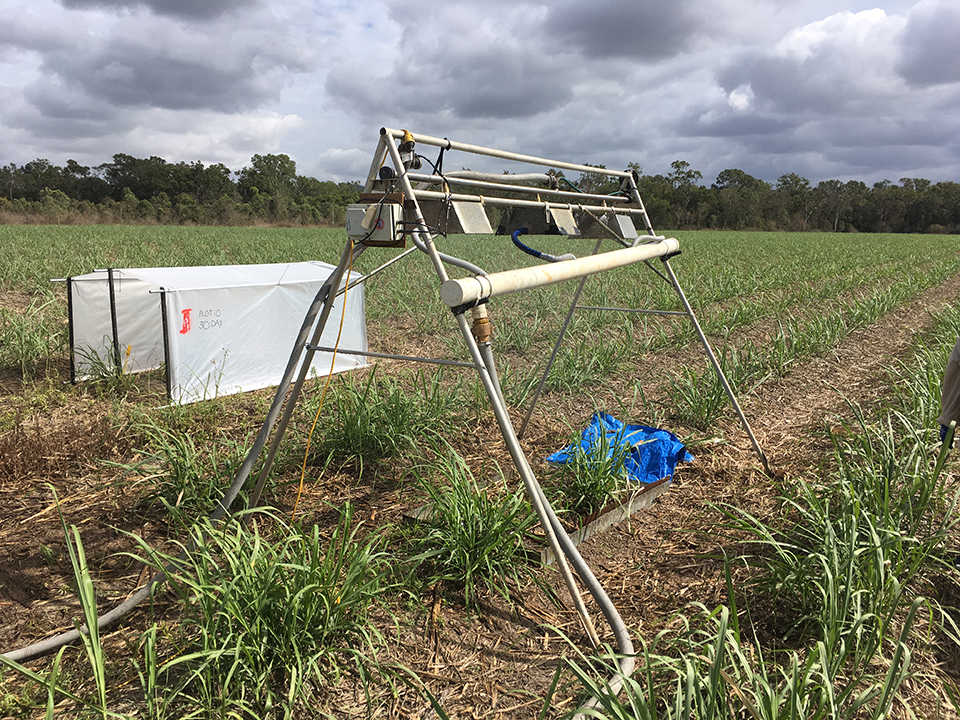
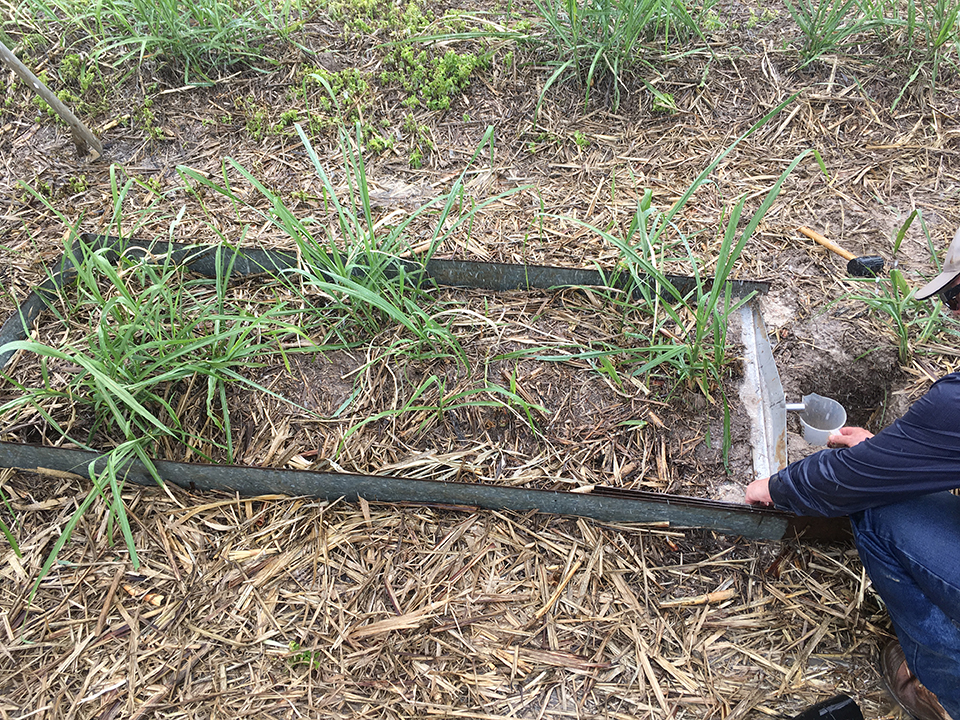
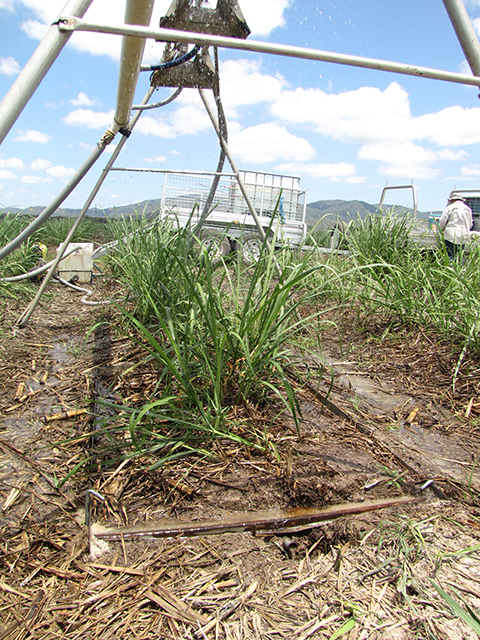
Within the Queensland sugar cane industry, the use of Imidacloprid to control cane beetle grubs in cane paddocks, has increased in recent years. This increased usage has led to concerns about stormwater run-off impacts to water quality and the Great Barrier Reef associated with residue pesticides in the water column. Studies have detected elevated levels of Imidacloprid within the run-off from the Burdekin catchment (Lewis et al 2009).
Diuron is the trade name of DCMU (3-(3,4-dichlorophenyl)-1,1-dimethylurea), which is an algaecide and herbicide (Alanwood, 2017). It is a herbicide of the phenylurea class that inhibits photosynthesis. Diuron is a very specific and sensitive inhibitor of photosynthesis. It blocks the plastoquinone binding site of photosystem II, is allowing the electron flow from where it is generated, in photosystem II, to plastoquinone. This interrupts the photosynthetic electron transport chain in photosynthesis and thus reduces the ability of the plant to turn light energy into chemical energy (Metz, J; et al 1986).
Water Quality Assessment
The water quality assessment involved the use of rainfall simulation assessment to replicate rainfall events after application of the Diuron and Imidacloprid. The initial rainfall simulation occurred within seven (7) days after the pesticide application, followed by further rainfall simulation analysis at thirty (30) days and one hundred (100) days post application.
Water quality analysis focused mainly on the pesticides Imidacloprid, Diuron, nutrients and sediment which are of concern to Great Barrier Reef Lagoon. The nutrient parameters included Total Suspended Solids, Total Nitrogen, Dissolved Inorganic Nitrogen, Total Phosphorous and Filterable Reactive Phosphorous.
Discussion of the results.
Sediment
Overall sediment loads were only slightly higher for the non-closed wheel application plots in comparison to the closed wheel application plots. Sediment run-off loads over the three rainfall simulation events were about 1.6 t/ha for the closed wheel, compared to 1.85 t/ha for non-closing wheel application. Sediment run-off loads were similar at 7 days, slightly higher for the closed wheel application at 30 days but substantially lower in the closed wheel application after 100 days. The rate of sediment loss could be the result of the extent of trash blanket on each plot protecting the soil surface from rain drop impacts (associated with the simulation) as well as the level of soil disturbance due to the closed or open wheel application. The differences in sediment loss are not significant and the application methods don’t appear to influence sediment loss rates.
Nutrients
Overall nutrient loads were higher for the non-closed wheel application plots in comparison to the closed wheel application plots. Nitrogen run-off loads over the three rainfall simulation events were about 18.3 kg/ha for the closed wheel, compared to 32.15 kg/ha for non-closing wheel application. Nitrogen run-off loads were similar at 7 days, about half for the closed wheel application at 30 days and again lower in the closed wheel application after 100 days. The rate of nitrogen loss appears to be linked to the extent of trash blanket on each plot as nutrient loads appear to be associated with organic nitrogen and phosphorous rather than inorganic fertilisers (with generally lower levels of dissolved inorganic nitrogen and phosphorous detected). The one exception to this general finding was at 30 days were elevated ammonia was found as a significant component (about 52.7% average) of the nitrogen load. This elevated ammonia may be the result of bacterial break down of the trash blanket with the soils under water saturated conditions. Phosphorous run-off loads over the three rainfall simulation events were about 1.2 kg/ha for the closed wheel, compared to 2.0 kg/ha for non-closing wheel application. Similar to nitrogen run-off loads, phosphorous run-off loads were similar at 7 days, around half the amount for the closed wheel application at 30 days and again lower in the closed wheel application after 100 days. The notable differences in nutrient loss between the treatment plots, is associated with the closed wheel application method where the nutrient loss rate is reduced due to coverage of soil rather than having an open application drill. The open application drill would also have resulted in some ammonia loss through volatilisation to the atmosphere so the reduction in nitrogen run-off associated with the closed wheel application is significant.
Imidacloprid
Overall Imidacloprid run-off loads were substantially higher for the non-closed wheel application plots in comparison to the closed wheel application plots. Imidacloprid run-off loads over the three rainfall simulation events were about 18.1 g /ha for the closed wheel, compared to 52.4 g/ha for non-closing wheel application. Imidacloprid run-off loads were always higher for the non-closed wheel and substantially higher for the non-closed wheel application after 30 days, post treatment application.
The open application drill would also have resulted in some Imidacloprid loss through solar radiation breakdown so the reduction in Imidacloprid run-off associated with the closed wheel application is a significant development. The results support the adoption of the closed wheel application for Imidacloprid insecticide treatments.
Diuron
Overall Diuron runoff loads were substantially higher for the broadacre application plots in comparison to the banded application plots. Diuron run-off loads over the three rainfall simulation events were about 275 g /ha for the banded application compared to 451 g/ha for broadacre application. Diuron run-off loads were similar at 7 days, about half for the banded application at 30 days and again still lower in the banded application after 100 days. The results support the adoption of the banded application for Diuron pesticide treatments.
Other Pesticides
Other key pesticides detected from 7 days included 2,4-D, Atrazine and Simazine. For all three pesticides, run-off loads were slightly lower for the closed wheel application plots. Over the three rainfall simulation events, 2,4-D loads were about 113.4 g/ha for the closed wheel, compared to about 137.9 g/ha for non-closing wheel application plots. Over the three rainfall simulation events, Atrazine loads were about 77.3 g/ha for the closed wheel, compared to about 97.1 g/ha for non-closing wheel application plots.
Over the three rainfall simulation events, Simazine residual loads were about 0.13 g/ha for the closed wheel, compared to about 0.15 g/ha for non-closing wheel application plots. Pesticides are often linked to sediments, so it could be assumed that there is a link between the rate of sediment loss and pesticide loss from each plot. The differences in these other pesticide losses are not significant and the application methods for Diuron and Imidacloprid don’t appear to influence other pesticide run-off loads or concentrations.
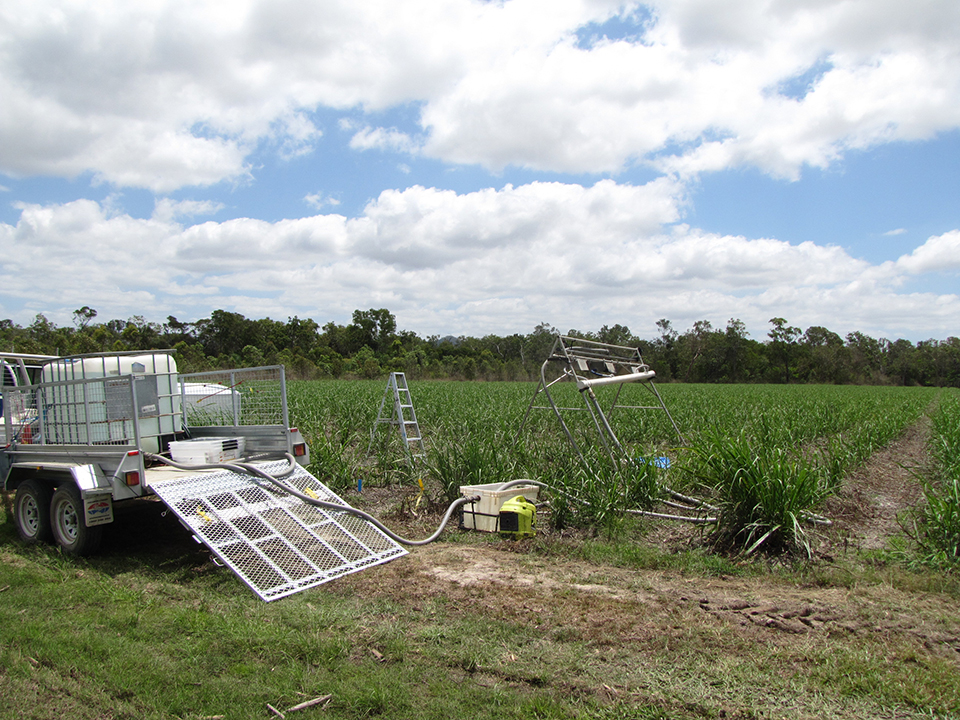
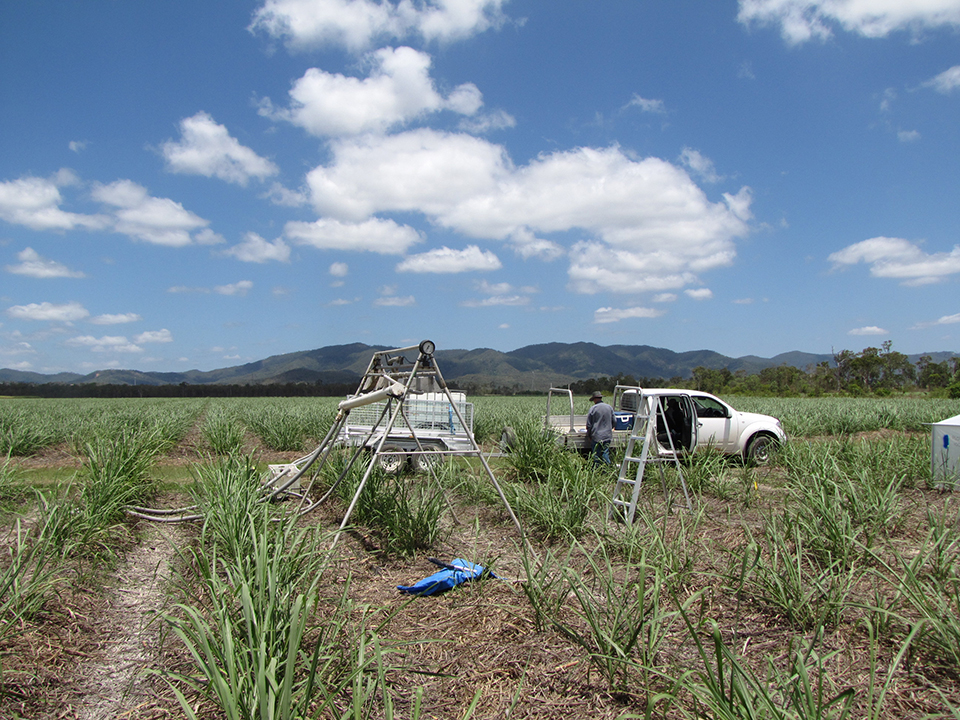
Conclusion
The results from the rainfall simulator indicate the effectiveness of reducing Imidacloprid run-off from cane paddock by using a closing-wheel application for the treatment of cane beetles. The results also demonstrate that a reduction in Diuron run-off loss is possible through the use of banded spray application rather than broadacre.
Further to these findings, sample results from the paddock run-off following flood irrigation demonstrated that rainfall simulation trials can provide similar total run-off concentration data to that obtained from the run-off water associated with an extensively flood irrigated paddock.